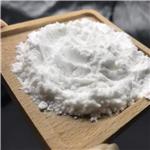Applicaton and benefits of Lauric acid
Jul 19,2022
Lauric acid, systematically dodecanoic acid,is a white, crystalline, water-insoluble powder, C12H24O2, a fatty acid occurring as the glyceride in many vegetable fats, especially coconut oil and laurel oil: used chiefly in the manufacture of soaps, detergents, cosmetics, and lauryl alcohol.

Occurrence
Lauric acid, as a component of triglycerides, comprises about half of the fatty-acid content in coconut milk, coconut oil, laurel oil, and palm kernel oil (not to be confused with palm oil),Otherwise, it is relatively uncommon. It is also found in human breast milk (6.2% of total fat), cow's milk (2.9%), and goat's milk (3.1%).
Applicaton and benefits
Like many other fatty acids, lauric acid is inexpensive, has a long shelf-life, is nontoxic, and is safe to handle. It is used mainly for the production of soaps and cosmetics. For these purposes, lauric acid is reacted with sodium hydroxide to give sodium laurate, which is a soap. Most commonly, sodium laurate is obtained by saponification of various oils, such as coconut oil. These precursors give mixtures of sodium laurate and other soaps.
Lauric acid is a precursor to dilauroyl peroxide, a common initator of polymerizations.
Nutritional and medical aspects
Although 95% of medium-chain triglycerides are absorbed through the portal vein, only 25–30% of lauric acid is absorbed through it.
Lauric acid increases total serum lipoproteins more than many other fatty acids, but mostly high-density lipoprotein (HDL). As a result, lauric acid has been characterized as having "a more favorable effect on total HDL than any other fatty acid, either saturated or unsaturated".In general, a lower total/HDL serum lipoprotein ratio correlates with a decrease in atherosclerotic incidence.Nonetheless, an extensive meta-analysis on foods affecting the total LDL/serum lipoprotein ratio found in 2003 that the net effects of lauric acid on coronary artery disease outcomes remained uncertain.A 2016 review of coconut oil (which is nearly half lauric acid) was similarly inconclusive about the effects on cardiovascular disease incidence.
- Related articles
- Related Qustion
- Uses and Properties of Lauric acid Feb 15, 2022
Lauric acid is a saturated fat. It is found in many vegetable fats, particularly in coconut and palm kernel oils. People use it as medicine.
Salicylic acid is a colorless, bitter-tasting solid, it is a precursor to and a metabolite of aspirin (acetylsalicylic acid). It is a plant hormone,and has been listed by the EPA Toxic Substances Control Act (TSCA) Chemical Substance Invent....
Jul 19,2022Organic ChemistryTartrazine is a synthetic lemon yellow azo dye primarily used as a food coloring. It is also known as E number E102, C.I. 19140, FD&C Yellow 5, Yellow 5 Lake....
Jul 19,2022Dyes and PigmentsLauric acid
143-07-7You may like
- The structure and Biological function of Cytochrome C
May 17, 2024
- Is CJC-1295 DAC same as CJC-1295?
May 16, 2024
- Botulinum toxin and Botulinum toxin A
May 16, 2024
- Lauric acid
-

- $1152.00 / 10Tons
- 2024-05-24
- CAS:143-07-7
- Min. Order: 10Tons
- Purity: 99.99%
- Supply Ability: 100Tons
- Lauric acid
-

- $6.00 / 1kg
- 2024-05-14
- CAS:143-07-7
- Min. Order: 1kg
- Purity: More than 99%
- Supply Ability: 2000KG/Month
- Lauric acid
-

- $0.00 / 1kg
- 2024-05-11
- CAS:143-07-7
- Min. Order: 1kg
- Purity: 99%
- Supply Ability: 500000kg





